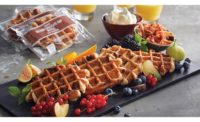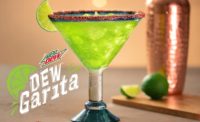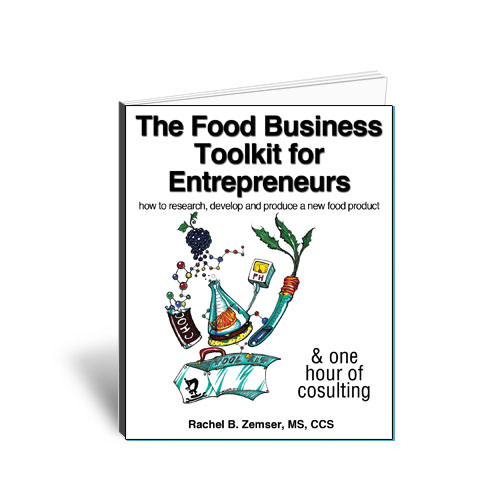STRATEGY SERIES: WHERE R&D MEETS FOODSERVICE
Advice for Pitching a New Foodservice Product
Ensure success by doing your homework regarding customer needs and strategies

Image is Everything. Developing a new food or beverage for foodservice? Take time to understand the operator-customer’s brand strategy and vision. For example, even when it comes to the same basic product—a sandwich or drink—there’s a big difference between an premium coffee chain and a value burger chain.
PHOTO CREDIT: IStock by Getty Images

Menu Matters. Developing a new product for an operator-customer’s menu? Send your corporate chef and developers to that restaurant to literally taste test and scout what’s already on the menu.
PHOTO CREDIT: IStock by Getty Images




Editor’s Note: Although there may be a pandemic-related slowdown, there’s no stopping new product development targeted at the commercial and non-commercial foodservice sectors. To help readers with new product development strategy, Prepared Foods asked Jeff Miller, founder and CEO of Cutting Edge Innovation, to create a thought leadership series connecting R&D strategy to foodservice sales. Cutting Edge Innovation advises on foodservice strategy, sales, business development, and innovation. Miller also created an online course, “Turbocharge Your Foodservice Sales.”
Miller has more than 20 years in the food and beverage industry and most recently was vice president and executive chef at Dunkin' Brands, Inc., one of the world's leading franchisors of quick-service restaurants with over 20,000 locations in more than 60 countries. In this capacity, he led a team of 22 chefs, food scientists, bakers, and coffee experts. Miller led global innovation and product development for all Dunkin’ and Baskin-Robbins product categories.
Here is the second installment in a six-part series.
Welcome to my monthly series where we cover the most common mistakes suppliers make when calling on national foodservice accounts. This month we’ll discuss mistake No. 5, which is “Not doing your homework on the customer’s needs and strategies.”
I present these suggestions from my own research with R&D as well as from other professionals in the go-to market process at major national chains. My insights also are rooted in my own experience leading R&D and innovation for both Dunkin’ and Baskin-Robbins.
In the last article, I talked about understanding operations and shared the example of a potential supplier coming in to sell me their incredible smoothie beverage. Their solution to get smoothies on our menu involved an all-in-one frozen pouch with the ingredients in it. You may recall that they told me, “It’s so easy—you just drop it in your blender.” Then they looked at me and expected an order for 9,000 restaurants.
What they didn’t know was that my Dunkin’ locations did not have blenders. So that example is important in regard to operations. Unfortunately, it also showed me that the supplier did not even care enough to visit my restaurants and do the necessary homework. Otherwise, they could have had a great meeting and solution that worked!
I would constantly have vendors that would present ideas that were “off-brand,” that wouldn’t work with our cost structure, or supply chain—or that just plain didn’t make any sense! Half the time it seemed they just wanted to “check the box” about presenting to one of the top 10 chains in the US. However, there was no real desire to do the work to create any value or help me see the fit for their product.
Like a lot of the fundamentals, it can be easy in sales to overlook something or to make incorrect assumptions. Yet is not that challenging to do some basic homework. In the end, this critical step can be enlightening to better understand who your target customer is—and what will help them succeed.
Remember: a customer’s success is your success. Your role is to help them see opportunities that fit their brand and their guest—all with an eye toward the future. Additionally, it will show through in your interaction that you have taken the time to learn about them and that you actually care. Believe me, these simple steps will help set you apart from your competition.
See the Big Picture
Let’s start with the big picture. It really helps if you can take the time to understand a target customer’s brand strategy and vision. Spend an hour to investigate available resources to find this. Find out what a company’s core values are, and really think through how or if your products fit this narrative.
Would you present the same products and concepts to a premium coffee house that you would to a value burger chain? Read the latest news and learn as much as you can. Take a variety of notes and you’ll see a picture come together of who they really are—well beyond just how you personally experience them as a brand.
Menu Strategy
Additionally, dig into their menu strategy. Does your product fit the prospective customer’s premium or value positioning? Ask yourself what is important to them, their menu and their customer—and then make sure that what you’re presenting is close to the core. Think about possible entry points. Limited Time Offers (LTOs) often are overlooked by newcomers to foodservice. This can be an excellent way to get your foot in the door. Take a look at what they’ve launched recently and see where you fit.
Eat, Drink—and be Mindful
Next, you’ll need to do restaurant visits. This one is both easy and fun! In non-pandemic times you can make it a team outing as well and eat in the restaurants. In the near term, you may need to request delivery or take out, and assign different items to different team members. What better way to learn about a brand than to experience it as a customer?
Order everything you can on the menu and really dig into the items. Take photos, document as you go and think through where your product fits. How do your unique value differentiators make sense for that menu? Also consider your customer’s competition and visit them as well. How can you help your customer win in their competitive circle?
Once you’ve understood your customer’s larger brand, menu strategy and once you’ve tried the products, you’ll be better equipped to develop concepts and a presentation that is relevant. Moreover, your customer will appreciate you for understanding their business and developing a strategic approach to presenting your new ideas and concepts.
Jeff Miller is the CEO of Cutting Edge Innovation and creator of the Turbocharge Your Foodservice Sales online course.
Access the first installment of this series.
Learn more about Cutting Edge Innovation.
Learn more about the “Turbocharge” sales growth program.
Looking for a reprint of this article?
From high-res PDFs to custom plaques, order your copy today!









